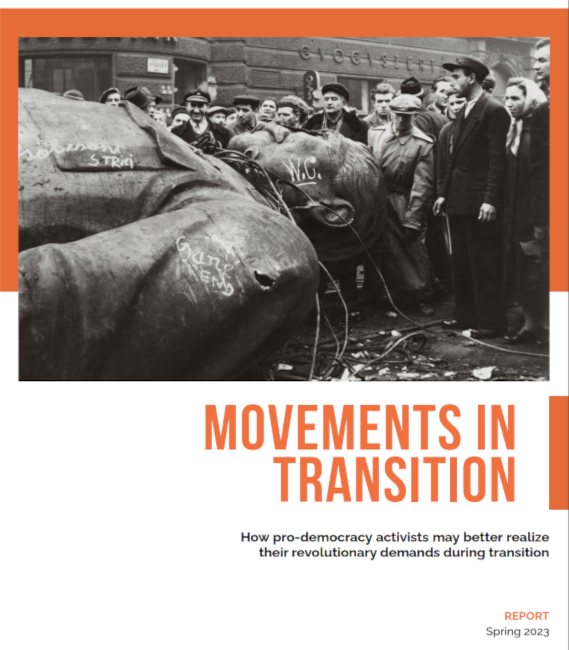
This report is a product of a year-long project with the goal of gathering what is known about social movements in democratic transitions and transforming that knowledge into practical lessons and tools for activists on the ground.
This report is a product of a year-long project with the goal of gathering what is known about social movements in democratic transitions and transforming that knowledge into practical lessons and tools for activists on the ground. CANVAS' objective was to develop a practical training curriculum on how a movement can successfully shift from playing a role of resistance to a role of reform and rebuild during the post-revolution transition.
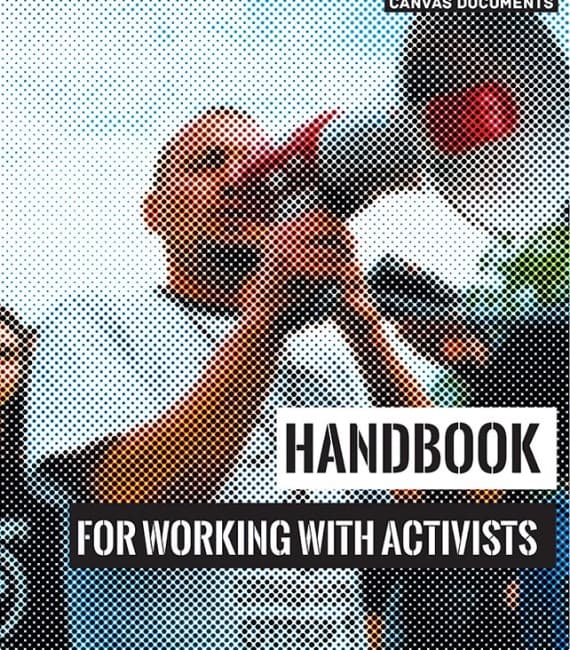
This CANVAS publication teaches organizers to activate and work with what once was OTPOR’s biggest resource – young and motivated people. This work gives leaders guidance on how to increase the number of activists and how to constantly teach them new skills.
This CANVAS publication teaches organizers to activate and work with what once was OTPOR’s biggest resource – young and motivated people. This work gives leaders guidance on how to increase the number of activists and how to constantly teach them new skills. From the recruitment of new activists up to the actual training itself, this work covers it all. Using the knowledge gained through the Serbian struggle for democracy almost two decades ago, CANVAS combines theory with practical examples in this guidebook so that organizers can easily adapt lessons to their own daily fights for sustainable change!
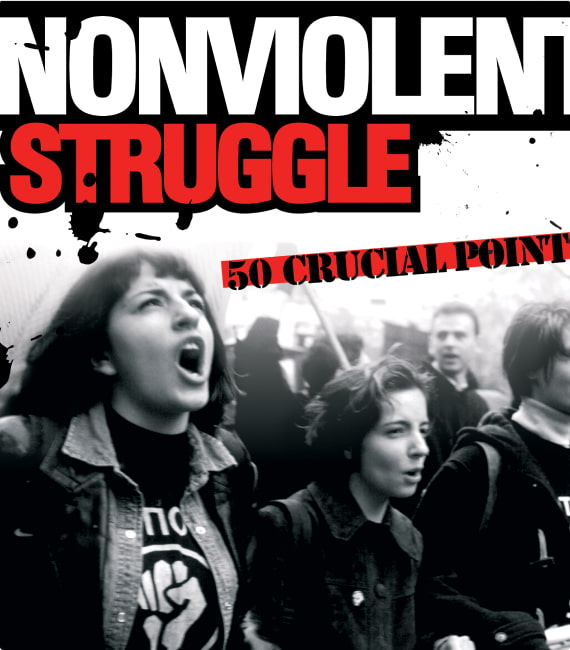
This practical step-by-step guide takes you through the vital stages of organizing a nonviolent movement for social change – strategic planning, early implementation, and responding to ensuing repression from the regime without jeopardizing your movement’s goals and legitimacy.
This practical step-by-step guide takes you through the vital stages of organizing a nonviolent movement for social change – strategic planning, early implementation, and responding to ensuing repression from the regime without jeopardizing your movement’s goals and legitimacy. It illustrates how activists can advance their causes just like entrepreneurs develop their ventures – starting with a thorough assessment of their environment and envisioning how to maximize their impact – and provides you with tested tools for implementing this approach. These include an analytical framework for evaluating your movement’s capabilities and how they measure up to the regime’s, templates for organizing events that gain media attention while minimizing the risks for participating activists, and expert tips for creating a targeted message that resonates with the shared values of the larger population. It will teach you how to accurately forecast the counteractions of the government and plan a response. In addition, this publication sheds light on how power truly operates in society and what motivates people to join and make sacrifices for a movement, topics that are as easy to overlook as they are necessary to consider if a movement is to be ultimately successful.
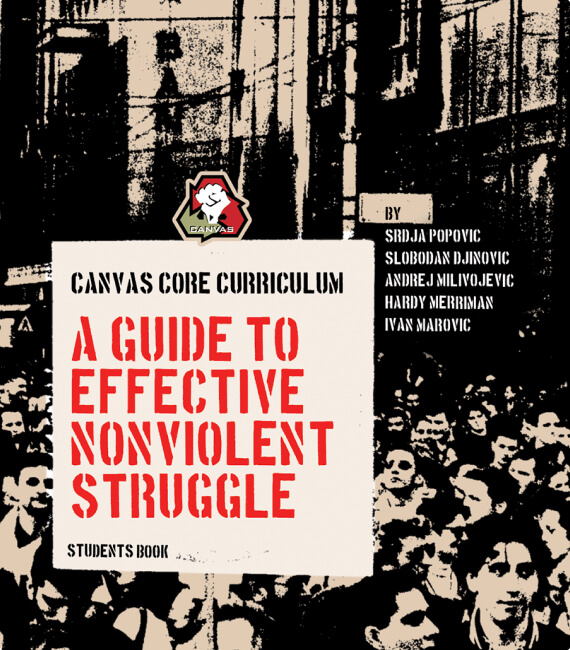
The CANVAS Core Curriculum covers aspects of theory, planning, and organizational considerations of strategic nonviolent conflict. The curriculum begins with a methodology for creating a vision of what should be changed in society; an examination of how political power is derived from the consent of the people;
The CANVAS Core Curriculum covers aspects of theory, planning, and organizational considerations of strategic nonviolent conflict. The curriculum begins with a methodology for creating a vision of what should be changed in society; an examination of how political power is derived from the consent of the people; and a guide to identifying the “pillars of support” that uphold a ruling system and can be targeted with strategic nonviolent action. In the second section, the curriculum covers strategic development of a movement, including how to develop clear and effective messaging and targeted communication. Finally, the third section focuses on challenges that arise during nonviolent struggle, such as how to ensure effective leadership, respond to repression by creating “decision dilemmas” for an opponent, and manage important resources. All of these lessons together provide an important overview of the lessons and principles that are fundamental to CANVAS’s work, making this curriculum a valuable reading for anyone seeking to build a successful, strategic nonviolent movement.
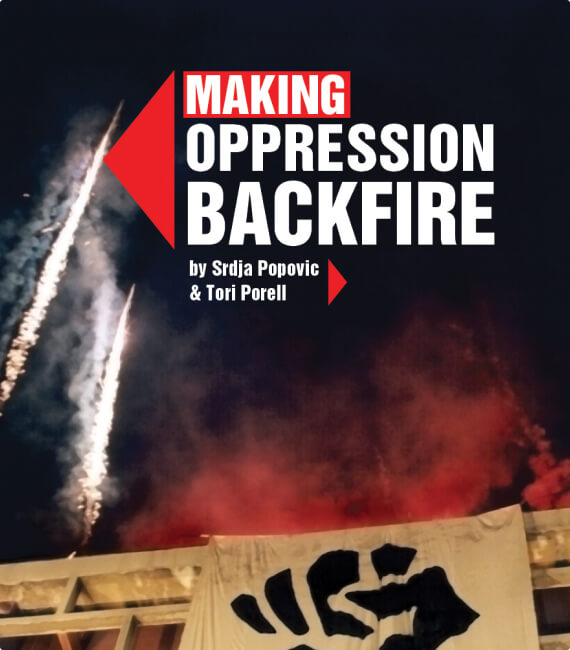
Have you ever wondered what memorizing a few songs together with your friends or having your grandmother repeatedly call the police from home may have to do with nonviolent resistance? This short book explains why knowledge and preparedness are paramount in the uneven struggle that activists almost always face.
Have you ever wondered what memorizing a few songs together with your friends or having your grandmother repeatedly call the police from home may have to do with nonviolent resistance? This short book explains why knowledge and preparedness are paramount in the uneven struggle that activists almost always face. By accepting that oppression is an inherent, constant, "occupational hazard" and fear is a natural response that can only be mitigated through obtaining information and taking certain precautions, activists can take steps to make the enemy actually work in their favor and galvanize support from a wider base. The first such step is creating a “dilemma action:” a situation in which the regime can either do nothing and appear powerless, or resort to repression, violate the shared norms of the community, and alienate even more members of society. Making Oppression Backfire presents case studies and tips for recognizing the issues that will resonate with your audience the most, teaching you how to pose such challenges to an unjust regime at a minimal cost. Another step is taking care of the movement's foot soldiers – the most vulnerable actors on the ground who are simultaneously the most valuable assets. Here, measures to ensure high morale among the movement's activists in the face of oppression and adequate support from the outside once it occurs are vital. You will learn how simple actions, such as singing, can help turn detention into a less grueling experience and how pressure from other citizens can impede a prison's functioning. Lastly, the publication demonstrates how to ensure a return on your efforts and sacrifices – by quickly generating publicity, both domestically and internationally, and safeguarding the truth of your actions from the regime’s propaganda machine.
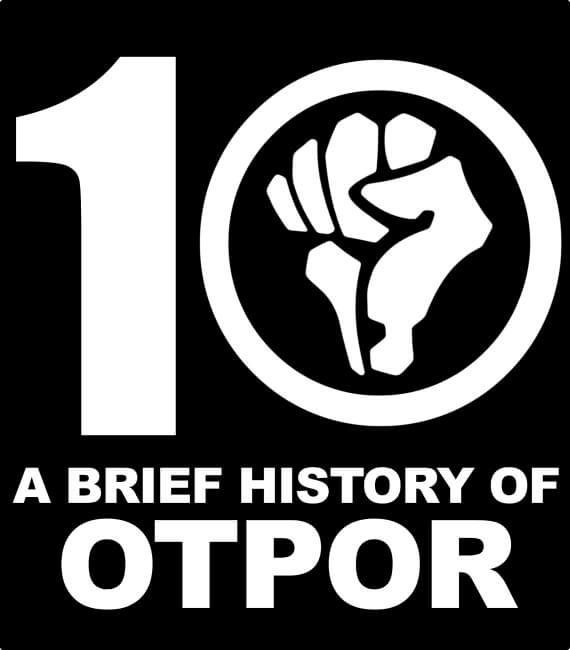
This brief and engaging chronology traces the beginnings and evolution of Otpor! This movement frequently made it unavoidable for the Serbian authorities to embarrass themselves publicly and turned going to prison for protesting into a sought-after badge of honor for an entire generation of Serbs.
This brief and engaging chronology traces the beginnings and evolution of Otpor! This movement frequently made it unavoidable for the Serbian authorities to embarrass themselves publicly and turned going to prison for protesting into a sought-after badge of honor for an entire generation of Serbs. At the same time, Otpor! inspired unprecedented solidarity on a large-scale and mobilized such sentiment to effect a historic political transformation.
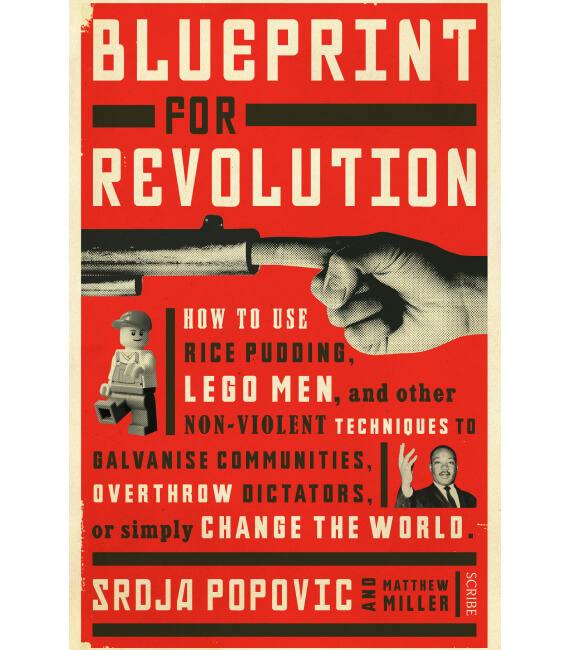
How do ordinary people become revolutionaries? In BLUEPRINT FOR REVOLUTION, Srdja Popovic outlines his philosophy for implementing peaceful world change and provides a model for activists everywhere through stories of his own experience toppling dictatorships (peacefully) and of smaller examples of social change (like Occupy Wall Street or fighting for gay rights).
How do ordinary people become revolutionaries? In BLUEPRINT FOR REVOLUTION, Srdja Popovic outlines his philosophy for implementing peaceful world change and provides a model for activists everywhere through stories of his own experience toppling dictatorships (peacefully) and of smaller examples of social change (like Occupy Wall Street or fighting for gay rights). Through examples of using laughter and music (e.g., Pussy Riot) to disarm the opposition and gather supporters, to staging a protest of Lego Men in Siberia (when flesh-and-blood people would have been shot), to a boycott of Cottage cheese in Israel to challenge price inflation while organizing around rice pudding to overthrow the dictator of the Maldives, Popovic uses true and sometimes outrageously clever examples of the ways in which non-violent resistance has achieved its means. </br></br> Popovic argues in favor of non-violent resistance not for ideological reasons (as persuasive as those are) but because non-violence actually works better than violence. This is an inspiring (and useful!) guide for any activist–and a thoroughly entertaining read for any armchair politico. In addition, the stories Popovic tells here are hilarious, accessible, inspiring, and at times outrageous. Aside from his own experiences, he includes little-known stories from the lives of Nelson Mandela, Gandhi, Harvey Milk, Martin Luther King Jr., etc.
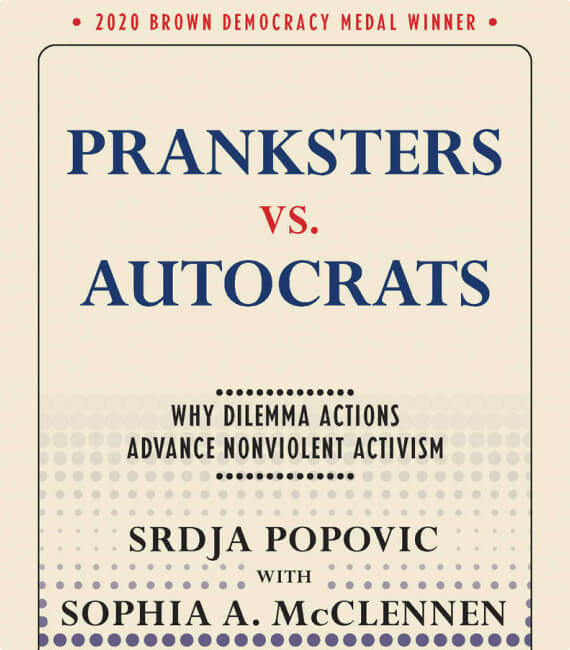
Dilemma actions are designed to create a ‘response dilemma’ or ‘lose-lose’ situation for public authorities, by forcing them to either concede some public space to protesters or make themselves look absurd or heavy-handed by acting against the protest. Dilemma actions—as part of a structured, strategic direct action—are a valuable component of effective nonviolent struggle.
Dilemma actions are designed to create a ‘response dilemma’ or ‘lose-lose’ situation for public authorities, by forcing them to either concede some public space to protesters or make themselves look absurd or heavy-handed by acting against the protest. Dilemma actions—as part of a structured, strategic direct action—are a valuable component of effective nonviolent struggle. And humorous ones, or laughtivism in particular, can be even more successful. in advancing particular goals than nonviolent resistance in general. This route offers you great opportunities for success. Dilemma actions are an effective tool for a range of situations. They have been used to advance democracy, human rights, and accountability struggles across the globe. They break down fear and apathy and offer the public an energizing way to resist oppressive authority. Pranksters Vs. Autocrats- Through research and analyses of 44 cases in “Pranksters vs Autocrats”, Srdja and Sophia are explaining the power of dilemma actions.

In the past three decades nonviolent social protest has become the most reliable path to democ- racy. However, not all nonviolent mobilization campaigns succeed. Since the early 20th century, less than 40 percent of nonviolent mass mobilization campaigns meet with success; and even during in the decades since the start of the third wave of democratization in 1974 more than half of these campaigns have failed.
In the past three decades nonviolent social protest has become the most reliable path to democ- racy. However, not all nonviolent mobilization campaigns succeed. Since the early 20th century, less than 40 percent of nonviolent mass mobilization campaigns meet with success; and even during in the decades since the start of the third wave of democratization in 1974 more than half of these campaigns have failed. We examine why some nonviolent campaigns are more successful than others by analyzing the use of a particular type of tactic, the dilemma action, which is a nonviolent civil disobedience tactic that provokes a "response dilemma" for the target. Collecting original data on dilemma actions during nonviolent campaigns, we find that roughly one-third of mass nonviolent campaigns in the past century deploy this strategy. We theorize four mechanisms linking dilemma actions to nonviolent campaign success: facilitating group formation, delegitimizing opponents, reducing fear, and generating sympathetic media coverage. Finally, we assess whether dilemma actions increase campaign success rates, finding that dilemma actions are associated with a 11-16 percent increase in campaign success.